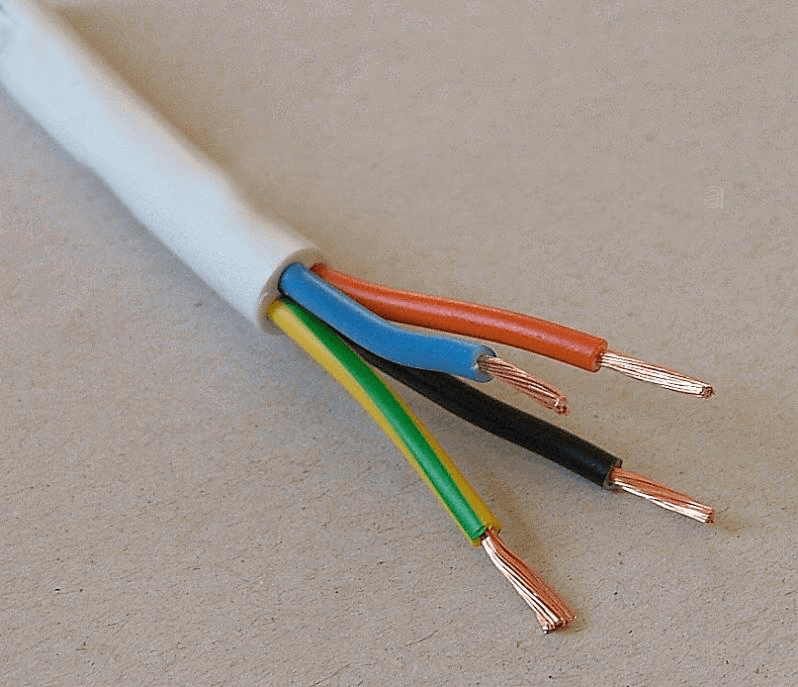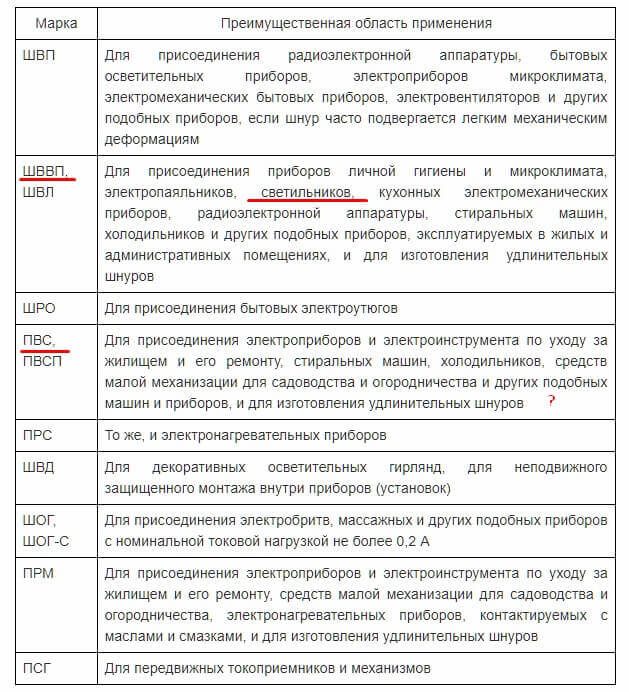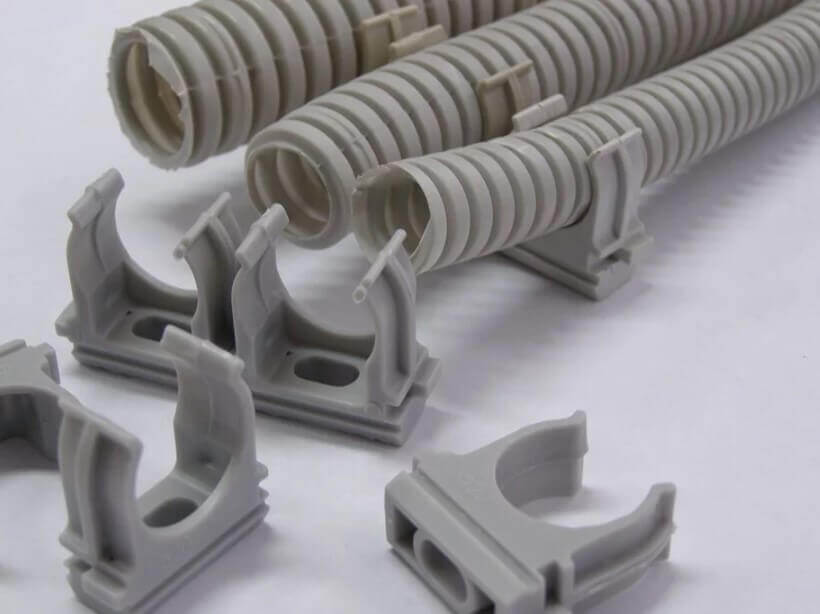Which wire to choose for connecting spotlights
Spotlights are a convenient way of dividing a room into zones and emphasizing elements of decor and interior design. Typically, lamps for them do not differ in high power, and with the spread of LED light sources, they rarely consume more than 5 watts at all. However, quite often, our editorial staff comes up with questions on the topic “what kind of wire is needed to connect spotlights?”. Let's figure it out together!
Key Features
At connecting spotlights we have the opportunity to lay wiring to each point without gating - behind the canvas suspended or suspended ceilings. The positive side is convenient and relatively cheap and fast. The problem is a fire hazard.
The fact is that when a cable is ignited when the gasket is closed, there is a high probability that the flame will not spread, because the air almost does not enter the source and the materials from which the insulation is made do not ignite. Moreover, hidden wiring in wooden structures is not permitted, respectively, once it is laid in concrete, the materials surrounding the wire will also not ignite.
At the same time, with open laying on the draft ceiling behind the “front” coating, there is a chance of ignition. Therefore, when choosing a cable or wire for connecting spotlights, first of all, rely on the fire safety position of this solution.
Ball screw, PVA or VVG
The main topic for the debate on the selection of cables and wires for spotlights is the choice of one of three brands of cable products:
- Ball screw;
- PVA;
- VVG;
Which one can and cannot be used? Let's consider in order.
ШВВП - cord with a vinyl common sheath and insulation of cores and PVC. The cores are made of twisted copper wires, which provides a high class of flexibility. This fact facilitates installation.
It is designed for non-stationary connection of electrical appliances to the mains. According to the definition, it is no longer suitable for such a task as the installation of lighting. His element is the power cords of hair dryers, televisions, fans, as well as various household appliances of low power or very mobile in the process. However, masters often offer it for connecting spotlights, as an inexpensive solution. In addition, the good flexibility of the cord greatly speeds up and simplifies the connection of the points themselves. Its isolation is not too thick, although it is within normal limits. Including therefore it is not suitable for long work. According to GOST, the time between failures is about 5000 hours.
In addition to this definition, there are no other regulated reasons for not using it to connect “points”; it is simply not designed for this.
PVA - vinyl connection wire. This is the abbreviation for the labeling of this cable product. The cross section of this wire is already round, respectively, it has a thicker and more durable insulation than that of a ball screw.The cores are the same multi-wire flexible.
PVA is also designed for non-stationary connection of electrical equipment to the network. Therefore, the PVA wire is likewise not intended for mounting lighting. But it is great for extension cords and for powering various hand-held power tools and other appliances.
Nevertheless, a high-quality shell allows it to be used for wiring, and electricians often use it for electrical installation behind plasterboard ceilings and stretch sheets. A flexible wire is easier to install than a rigid one with single-wire conductors (single core).
VVG - wire with rigid monolithic veins. His insulation is also made of PVC, both the general sheath and the insulation of each core. Designed for stationary connection of electrical equipment and wiring.
So it is by definition suitable for wiring for spotlights. But electricians do not always like to mount a VVG cable for connecting spotlights. VVG is hard, which makes it difficult to connect the lamp in a limited window space to set the point. In addition, the luminaires themselves usually have soft wires and connection with a hard one can be difficult.
Nevertheless, a detailed study of GOST 7799-97, somewhat corrects the above, as follows:
That is, according to this information, the ball screw is still allowed to connect fixtures, but for PVA - this is not said. Apparently we are talking about table lamps, floor lamps and similar devices.
And this is an excerpt from GOST 31996-2012, which relates to the VVG cable:
Mounting options
It is necessary to lay a cable for spotlights on the draft ceiling in gray Pvc corrugation.
It does not spread combustion, protects conductors and allows the use of dowels, clamps or clips for quick wire fasteners to the ceiling.
However, spotlights are installed not only in the living room or bedroom, but also in the bathroom. Bathrooms are rooms with high humidity, which causes certain requirements for the electrical safety of your wiring. Firstly, all switches, junction boxes and sockets should be moved outside the bathroom or at least outside zone I. If you still can’t avoid sockets, use the recommendations described in the article: sockets in the bathroom.
Secondly, to reduce the risk of electric shock - use lamps that are powered by a voltage of 12V, especially if the lamps are installed in close proximity to the wash basin, shower or bath.
It is possible to use 220V luminaires in the case of a waterproof design or their location in a place remote from the listed objects.
Also, be sure to watch the video in which the specialist tells how to properly lay the wires to the spotlights and what kind of mistake should not be made:
In conclusion, I would like to consolidate the stated material. So, what cable is better to use for connecting spotlights, and which is not? Almost all experts agree that according to their purpose and technical characteristics, VVGNG-LS cable is best suited for these tasks. The cross section is typically 1.5 square meters. mm for lighting lines, however, modern fixtures consume little - you can use 0.75 square meters. mm But consider the lower mechanical strength of the conductive conductors and the real current load, with high power consumption. Lay it on the ceiling in a corrugated pipe that does not support combustion and do not forget about reliable wire connection.
Related materials:


















